#Roman engineering
Explore tagged Tumblr posts
Text




Part of the ancient Roman road to Gaul near the Italian town of Donnas in Aosta Valley has been carved into the rock, bearing a testament to the Roman engineering capabilities. It was constructed during the time of Augustus.
#ancient rome#roman empire#ancient history#roman road#aosta valley#italy#roman engineering#via delle gallie
480 notes
·
View notes
Text
This is how the Romans built bridges.
Así construían, los romanos, los puentes.
È così che i Romani costruivano i ponti.
4 notes
·
View notes
Note
Hello yes I am a geology student I would LOVE to know more about the photos and location!!!
Yes! About this place:


It's Las Médulas, located in El Bierzo, Castilla y León, Spain. It's a small mountain range (you can tour it in a few hours), or more like the remains of one. It did not appear naturally. no: It's a hill that has been DEMOLISHED. If you watch closely in the second (right) picture, all the mountains in the area are rounded and full of vegetation.
Thats how it should actually look:

And it wasn't a natural disaster.
It was the Roman Empire!
Sometime around 1st century BC the romans came to Spain and Portugal and saw gold. They wanted to have as much as they can, so they invented a lot of mining techniques. In this case, they made a lot of tunnels through the mountain and they FLOODED them with the water of a nearby river, tearing down the WHOLE thing. It must have been wild, to see a mountain be absolutely destroyed in a split second! And yes, colonialism.
In this documentary you can see a recreation (go to 2:49):
youtube
The red earth is a common thing in Castilla y León, btw :)
I hope you find this interesting and i hope i explained myself well. English is not my first nor my second language.
Have a nice weekend!
6 notes
·
View notes
Video
And by "over 2000 years old" they mean "were originally on the Curia Julia, the senate house in the Roman Forum, during the reign of Domitian"!
The massive doors of Saint John Lateran are over 2,000 years old. They are perfectly balanced, taking only one person to open and close them.
Source
#st john lateran#curia julia#and after 5 trips to rome i have yet to go inside the curia julia but have been in st john lateran once or twice#must be the doors#roman engineering
10K notes
·
View notes
Text

Launch Your Creativity with Space Crafts!
In honor of the completion of our Nancy Grace Roman Space Telescope’s spacecraft — the vehicle that will maneuver the observatory to its place in space and enable it to function once there — we’re bringing you a space craft you can complete at home! Join us for a journey across the cosmos, starting right in your own pantry.
Stardust Slime
Ingredients:
1 5 oz. bottle clear glue
½ tablespoon baking soda
Food coloring
1 tablespoon contact lens solution
1 tablespoon glitter
Directions:
Pour the glue into a bowl.
Mix in the baking soda.
Add food coloring (we recommend blue, purple, black, or a combination).
Add contact lens solution and use your hands to work it through the slime. It will initially be very sticky! You can add a little extra contact lens solution to make it firmer and less goopy.
Add glitter a teaspoon at a time, using as much or as little as you like!
Did you know that most of your household ingredients are made of stardust? And so are you! Nearly every naturally occurring element was forged by living or dying stars.
Take the baking soda in this slime recipe, for example. It’s made up of sodium, hydrogen, carbon, and oxygen. The hydrogen was made during the big bang, right at the start of the universe. But the other three elements were created by dying stars. So when you show your friends your space-y slime, you can tell them it’s literally made of stardust!
Still feeling crafty? Try your hand at more pantry projects or these 3D and paper spacecraft models. If you’re eager for a more advanced space craft, check out these embroidery creations for inspiration! Or if you’re ready for a break, take a virtual tour of an interactive version of the Roman Space Telescope here.
Make sure to follow us on Tumblr for your regular dose of space!
#NASA#astronomy#telescope#Roman Space Telescope#technology#space#science#tech#DIY#crafts#engineering#STEM
1K notes
·
View notes
Text










Forest (No. 96)
Pont du Gard, F
#Pont du Gard#France#trail#travel#original photography#vacation#tourist attraction#landmark#architecture#archaeology#history#Southern Europe#summer 2021#landscape#countryside#woods#forest#nature#flora#Gardon River#engineering#Roman history#French history#aqueduct
29 notes
·
View notes
Text

car trouble?
#look at my mechanic bro my engines gna fail#peep his new tattoo… i wanna make a little comic ab it but idk if i will#artists on tumblr#my art#digital art#original art#art#character art#artwork#original character#oc art#oc#illustration#character illustration#original character art#illustrator#character design#illustrative art#small artist#oc artwork#oc artist#charmed#roman carisi
23 notes
·
View notes
Text

Building Trajan's Column (113 AD)
#history#infographics#infographic#2nd century#engineering#ancient rome#ancient history#rome#romans#architecture#architects
201 notes
·
View notes
Text

Double spiral staircase, an architectural and engineering marvel, is silently standing within a public building in old town of Graz in Strya, Austria.
Completed in 1438 under the guidance of Holy Roman Emperor Frederick III, the Burg of Graz was expanded by Frederick’s son, Emperor Maximilian, from 1494-1500.
When reopened, officials and civilians marvelled at "Doppelwendeltreppe," or “Double Spiral Staircase” that travelled two floors to top of tower.
This architectural masterpiece of 1499 has often been interpreted as a symbol of eternity.
Graz people call it "stairs of reconciliation."
If you go separate ways, you will at some point reunite.
Built by an unknown architect, the staircase has proven to stand the test of time. It is still used for official town purposes today.
Double spiral staircases are not unheard of, though they are very rare.
This one is remarkable for hollow spindles, which feature a remarkable amount of dexterity in engineering.
#spiral staircase#double spiral staircase#Graz#Strya#Austria#Holy Roman Emperor Frederick III#Emperor Maximilian#Doppelwendeltreppe#architectural masterpiece#eternity#architecture#stairs of reconciliation#engineering#stone masonry
22 notes
·
View notes
Text

Soleil Navarro.*
She's not actually in love with her boyfriend Jayden, but it's not like he's in love either. They're best friends and he's absolutely insane in bed though so she's pretty down on keeping up their... less than conventional relationship.
#shes an engineering major#and he was like 'yo soleil if we get married can i be a stay at home husband'#and she was like 'i mean yeah u kind of meet all the requirements.'#'and i make a shit ton of money so we'll be fine.'#so yeah theyre basically roman and cassidy but a lot less toxic#boundary wise she was like 'hey i dont want you messing with other girls okay ik u have a history' and then jj was like '... what if we..#'mess with other girls... together..?'#so they occasionally fuck a girl together#bisexuals!!#sims#sims 4#soleil.*#ts4#the sims#the sims 4#cas#cas screenshots#gamma saga#oc#ocs#simblr#show us your sims#the sims community#my sims#sims community#the sims 4 cas#showusyoursims
107 notes
·
View notes
Text
Public comment to CDC HICPAC committee November 2024
Infection control in healthcare.
My public comment to the CDC HICPAC Committee.
Direct link to my comment in the stream.
Direct link to the start of the whole comment period.
Day 2 of the meeting link, with another session of public comments then the vote.
I’m Chloe Humbert. Semmelweis is known for his campaign for hand washing standards. He was attacked by contrarians until his death. Today he is vindicated yet respiratory hygiene is the science denier flavour of the day. It’s not okay that doctors and nurses are maskless and breathing directly on patients who then get infected. Now is the chance for those in positions to do so to set a precedent for deserved protection of worker and patient safety. To be on record giving evidence based practitioners something to hang onto. We are going back. The only question is how far back people in medical leadership are willing to sign onto. The announced incoming department of defense secretary is someone who said on national tv that he doesn’t wash his hands. We know what can happen because of what has happened before. In the 1850s Florence Nightingale went to the Crimean War - a hospital in Constantinople. That's Istanbul now, and that situation was no Turkish delight on a moonlit night. She arrived at a British military base ATOP a cesspool where patients lay in their own feces among rodents and more soldiers died from infectious diseases than injuries in battle. Under Nightingale the place was scrubbed and she reduced the facility’s death rate by two thirds. We might go back further. The Dark Ages was called that because society moved backwards from the technological advances that had come before. The fall of the Roman Eempire was marked by elites who only cared about the status quo; they could’ve developed a steam engine as far back as Heron in 15 BC but didn’t bother. Going forward is a choice. In an article in the Journal of Infectious Diseases & Preventive Medicine there’s a description of what happened back then. “In medieval times, hospitals were hazardous places, Epidemic infections killed large numbers of hospital patients during this period. Hospital infection and death rates were high. When a sick person entered a hospital, his or her property was disposed of, and in some regions, a requiem mass was held, as if he or she had already died.” Going backward is a choice. We know better now. We use surgical gloves, autoclaves, disinfectants, checklists and yes, respirator masks exist. But big healthcare corporations don't wanna pay for that, they lock up PPE, force nurses to work without sick leave at hospitals, and make patients beg for reasonable accommodation. Going forward is a choice. Let this not be a case of rearranging deck chairs on the Titanic. But a time when serious healthcare professional leadership takes a stand for sanitary conditions in healthcare, and makes respirator masks and the precautionary principle the standard of care instead doing with masks what would be like calculating whether you should wash your hands after the toilet based on age or health status.
#healthcare#government#pandemic#infection control#public health#infectious diseases#healthcare workers#nurses#doctors#patient safety#patients#dark ages#medieval#roman empire#florence nightingale#constantinople#crimean war#semmelweis#hand washing#respirators#masks#anti-mask#n95 masks#n95#contrarians#steam engine#history#elite panic#status quo#cdc hicpac
5 notes
·
View notes
Text
The importance of a horse's butt.
La importancia del trasero.
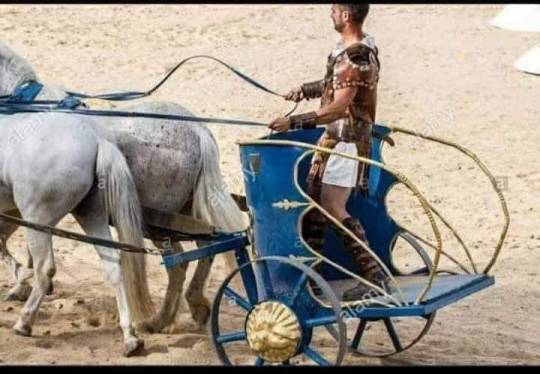
(English / Español)
A curiosity:
The railway gauge (distance between the 2 rails) in the United States is 4 feet 8.5 inches (1,435 metres).
Why was this measure used?
Because this was the measure of the English railways and, as the American railways were built by the English, this measure was used as a matter of compatibility.
Why did the English use this measure?
Because the English companies that built the carriages were the same ones that built the carriages before the train existed and they used the same elements that were used to build the carriages.
Why were the floats that size (4 feet 8.5 inches)?
Because the distance between the wheels of the carriages should be such that they could fit in the old streets of Europe, which were exactly that size.
And why did the little streets have that size?
Because these streets were opened by the Roman Empire, during its conquests, whose measures were based on the ancient Roman chariots.
And why did Roman chariots have such a size?
Because they were made to accommodate the backside of 2 horses.
Finally - and this is what I wanted to get to - the American orbital shuttle "Shuttle" uses 2 fuel tanks (SRB for "Solid Rocket Booster") which are manufactured by Thiokol in the state of Utah.
The engineers who designed it would have preferred to make it larger, but they were limited by the railway tunnels in which it would be transported, as these had their measurements based on the gauge of the train.
CONCLUSION:
The world's most advanced example of engineering design and technology is conditioned by the size of the Roman horse's rear…The world's most advanced example of engineering design and technology is conditioned by the size of the Roman horse's rear...
*****
Una curiosidad
El ancho de los ferrocarriles (distancia entre los 2 rieles) de Estados Unidos es de 4 pies y 8,5 pulgadas (1,435 metros).
¿Por qué se usó esa medida?
Porque ésta era la medida de los ferrocarriles ingleses y, como los ferrocarriles americanos fueron construidos por los ingleses, esta medida fue usada por una cuestión de compatibilidad.
¿Por qué usaban los ingleses esta medida?
Porque las empresas inglesas que construían los vagones eran las mismas que construían las carrozas antes de que existiera el tren y utilizaron los mismos elementos que usaban para fabricar las carrozas.
¿Por qué las carrozas tenían esa medida (4 pies y 8,5 pulgadas)?
Porque la distancia entre las ruedas de las carrozas debería ser tal que pudiesen caber en las antiguas callecitas de Europa, que tenían exactamente esa medida.
¿Y por qué las callecitas tenían esa medida?
Porque estas calles fueron abiertas por el Imperio Romano, durante sus conquistas, cuyas medidas estaban basadas en los antiguos carros romanos.
¿Y por qué los carros romanos tuvieron esa medida?
Porque se hicieron para acomodar el trasero de 2 caballos.
Finalmente – y ahi queria yo llegar – el trasbordador orbital norteamericano “Shuttle” utiliza 2 tanques de combustible (SRB por “Solid Rocket Booster”) que son fabricados por Thiokol, en el estado de Utah.
Los ingenieros que lo proyectaron preferían haberlo hecho más grandes, pero tuvieron limitaciones por los túneles de los ferrocarriles en donde serían transportados, ya que estos tenían sus medidas basadas en la trocha del tren.
CONCLUSIÓN:
El ejemplo más avanzado de la ingeniería mundial en diseño y tecnología está condicionado por el tamaño del trasero del caballo romano…
Fuente: elPlural
3 notes
·
View notes
Text
FUNKY LITTLE BALD CHARACTER POLL ROUND 3, GROUP 1
over the last 2 rounds, rom has managed to welcome FOUR fellow engineers into his union, as well as one self-employed(?) bug. but can this union provide for the performing arts? does it have better benefits than the hunter association, which provides its members with a License to Kill With Impunity?
the choice is yours! if rom and his team can successfully finish with a total of votes within 15% of melody's, in either direction, they'll have proven the power of the proletariat and UNIONIZED her, meaning she'll join their cause for the remainder of the poll!


#guess who got their wires crossed between final fantasy 4 and dragon quest 8 because of the roman numerals last go-around#did anyone notice. does anybody care what game specifically that guy comes from. feel free to lodge a formal complaint#rom#deep space 9#ds9#tinker knight#shovel knight#cid pollendina#final fantasy#final fantasy iv#final fantasy 4#lord crump#paper mario ttyd#the engineer#team fortress 2#tf2#dell conagher#zote#hollow knight#melody#melody hxh#senritsu#round 3#polls
56 notes
·
View notes
Photo
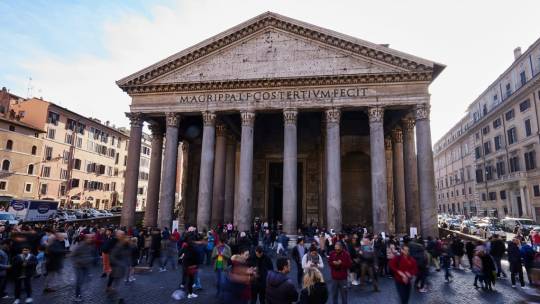

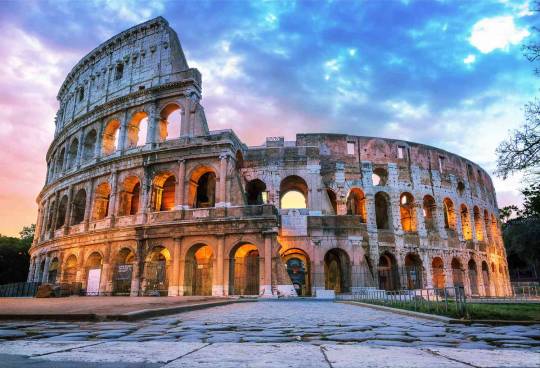
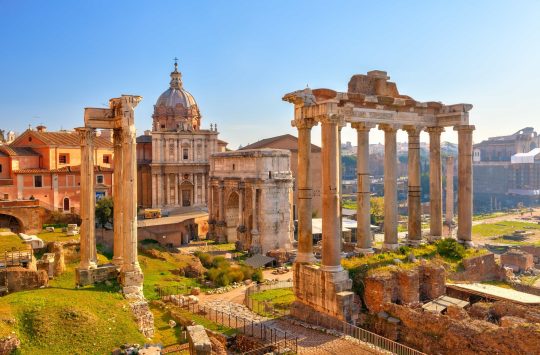
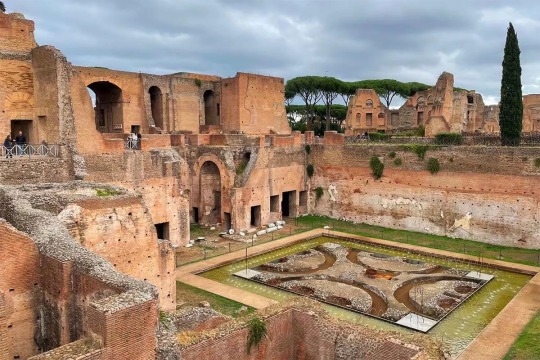

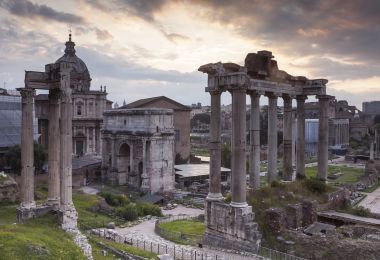

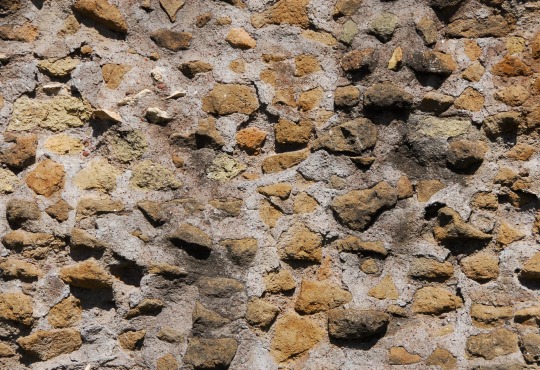

Roman Concrete: Mystery of Why Roman Buildings Have Survived so long has been Unraveled
The majestic structures of ancient Rome have survived for millennia — a testament to the ingenuity of Roman engineers, who perfected the use of concrete.
But how did their construction materials help keep colossal buildings like the Pantheon (which has the world's largest unreinforced dome) and the Colosseum standing for more than 2,000 years?
Roman concrete, in many cases, has proven to be longer-lasting than its modern equivalent, which can deteriorate within decades. Now, scientists behind a new study say they have uncovered the mystery ingredient that allowed the Romans to make their construction material so durable and build elaborate structures in challenging places such as docks, sewers and earthquake zones.
The study team, including researchers from the United States, Italy and Switzerland, analyzed 2,000-year-old concrete samples that were taken from a city wall at the archaeological site of Privernum, in central Italy, and are similar in composition to other concrete found throughout the Roman Empire.
They found that white chunks in the concrete, referred to as lime clasts, gave the concrete the ability to heal cracks that formed over time. The white chunks previously had been overlooked as evidence of sloppy mixing or poor-quality raw material.
"For me, it was really difficult to believe that ancient Roman (engineers) would not do a good job because they really made careful effort when choosing and processing materials," said study author Admir Masic, an associate professor of civil and environmental engineering at the Massachusetts Institute of Technology.
"Scholars wrote down precise recipes and imposed them on construction sites (across the Roman Empire)," Masic added.
The new finding could help make manufacturing today's concrete more sustainable, potentially shaking up society as the Romans once did. "Concrete allowed the Romans to have an architectural revolution," Masic said. "Romans were able to create and turn the cities into something that is extraordinary and beautiful to live in. And that revolution basically changed completely the way humans live." Lime clasts and concrete's durability
Concrete is essentially artificial stone or rock, formed by mixing cement, a binding agent typically made from limestone, water, fine aggregate (sand or finely crushed rock ) and coarse aggregate (gravel or crushed rock).
Roman texts had suggested the use of slaked lime (when lime is first combined with water before being mixed) in the binding agent, and that's why scholars had assumed that this was how Roman concrete was made, Masic said.
With further study, the researchers concluded that lime clasts arose because of the use of quicklime (calcium oxide) — the most reactive, and dangerous, dry form of limestone — when mixing the concrete, rather than or in addition to slaked lime.
Additional analysis of the concrete showed that the lime clasts formed at extreme temperatures expected from the use of quicklime, and "hot mixing" was key to the concrete's durable nature.
The benefits of hot mixing are twofold," Masic said in a news release. "First, when the overall concrete is heated to high temperatures, it allows chemistries that are not possible if you only used slaked lime, producing high-temperature-associated compounds that would not otherwise form. Second, this increased temperature significantly reduces curing and setting times since all the reactions are accelerated, allowing for much faster construction."
To investigate whether the lime clasts were responsible for Roman concrete's apparent ability to repair itself, the team conducted an experiment.
They made two samples of concrete, one following Roman formulations and the other made to modern standards, and deliberately cracked them. After two weeks, water could not flow through the concrete made with a Roman recipe, whereas it passed right through the chunk of concrete made without quicklime.
Their findings suggest that the lime clasts can dissolve into cracks and recrystallize after exposure to water, healing cracks created by weathering before they spread. The researchers said this self-healing potential could pave the way to producing more long-lasting, and thus more sustainable, modern concrete. Such a move would reduce concrete's carbon footprint, which accounts for up to 8% of global greenhouse gas emissions, according to the study.
For many years, researchers had thought that volcanic ash from the area of Pozzuoli, on the Bay of Naples, was what made Roman concrete so strong. This kind of ash was transported across the vast Roman empire to be used in construction, and was described as a key ingredient for concrete in accounts by architects and historians at the time.
Masic said that both components are important, but lime was overlooked in the past.
The research was published in the journal Science Advances.
By Katie Hunt.
#Mystery of Why Roman Buildings Have Survived so long has been Unraveled#roman concrete#the pantheon#the colosseum#roman engineers#architecture#archeology#archeolgst#history#history news#ancient history#ancient culture#ancient civilizations#ancient rome#roman history#roman empire#roman buildings#long reads
105 notes
·
View notes
Text

This photo contains both flight (flat in the foreground) and qualification assembly (upright in the background) versions of the Solar Array Sun Shield for NASA’s Nancy Grace Roman Space Telescope. These panels will both shade the mission’s instruments and power the observatory.
Double Vision: Why Do Spacecraft Have Twin Parts?
Seeing double? You’re looking at our Nancy Grace Roman Space Telescope’s Solar Array Sun Shield laying flat in pieces in the foreground, and its test version connected and standing upright in the back. The Sun shield will do exactly what it sounds like –– shade the observatory –– and also collect sunlight for energy to power Roman.
These solar panels are twins, just like several of Roman’s other major components. Only one set will actually fly in space as part of the Roman spacecraft…so why do we need two?
Sometimes engineers do major tests to simulate launch and space conditions on a spare. That way, they don’t risk damaging the one that will go on the observatory. It also saves time because the team can do all the testing on the spare while building up the flight version. In the Sun shield’s case, that means fitting the flight version with solar cells and eventually getting the panels integrated onto the spacecraft.

Our Nancy Grace Roman Space Telescope's primary structure (also called the spacecraft bus) moves into the big clean room at our Goddard Space Flight Center (top). While engineers integrate other components onto the spacecraft bus in the clean room, the engineering test unit (also called the structural verification unit) undergoes testing in the centrifuge at Goddard. The centrifuge spins space hardware to ensure it will hold up against the forces of launch.
Engineers at our Goddard Space Flight Center recently tested the Solar Array Sun Shield qualification assembly in a thermal vacuum chamber, which simulates the hot and cold temperatures and low-pressure environment that the panels will experience in space. And since the panels will be stowed for launch, the team practiced deploying them in space-like conditions. They passed all the tests with flying colors!
The qualification panels will soon pass the testing baton to the flight version. After the flight Solar Array Sun Shield is installed on the Roman spacecraft, the whole spacecraft will go through lots of testing to ensure it will hold up during launch and perform as expected in space.
For more information about the Roman Space Telescope, visit: www.nasa.gov/roman. You can also virtually tour an interactive version of the telescope here.
Make sure to follow us on Tumblr for your regular dose of space!
#NASA#astronomy#telescope#Roman Space Telescope#technology#space#science#tech#twins#engineering#STEM
1K notes
·
View notes
Text
come with me, take my hand, eat the roman concrete with me அழகே, we shall dine on resistors and keps nuts xoxo
#engineering canon event is thinking about munching on parts#also roman concrete but thats just for funsies#i mean who WOULDNT eat the roman concrete#chat is this rizz
5 notes
·
View notes